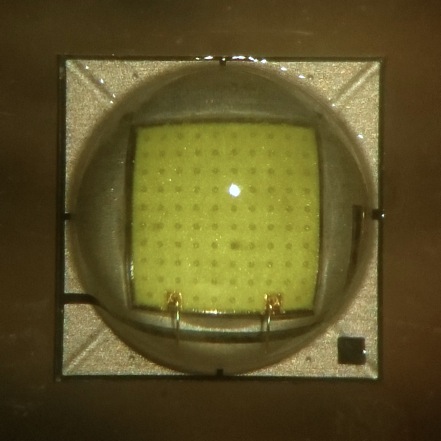
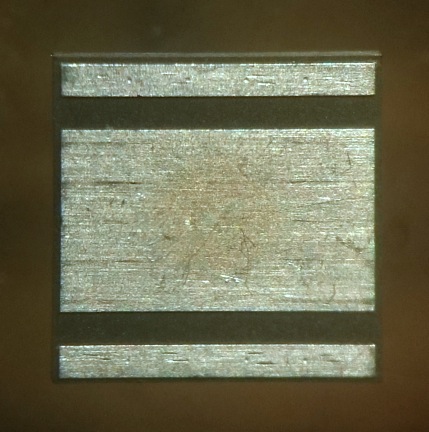
I did not test a Luminus led before. The SST-40 is new, cheap for a Luminus led and has the XM-footprint so a DTP copper board for it is readily available. The specifications are also very similar to a XM-L2 led, but it is always the question what will happen when we go out of specs! :-)
The led that is tested was bought from Kaidomain, the output bin is N4, which is not the highest bin listed, the tint bin is BA which is just above 6500K.
The test was done like all my more recent emitter tests. I described it in detail in my XP-L test. , with two minor differences that should not matter significantly for the results: I used my Integrating sphere no. II instead of no. I, and for the current I used a clamp meter, which appears to measure 0.1A lower than the power supply current-reading that I used before.
In summary: 1) just one led was tested, reflowed on a DTP copper board (XM-KDlight 16mm), 2) I used my large version II integrating sphere with high quality luxmeter, 3) the output numbers and voltages were measured with the led close to 'steady state' for each current, so warmed up and settled, you should be able to get these numbers in a well heatsinked flashlight. Mind that these are output numbers of the bare led, in a flashlight there will be losses from light obstructions, lens and optic, 4) output is in 'djozz-lumen' defined as 1/550 of the output of my Sunwayman D40A on high setting, which I hope is close to the real lumen, but at least is consistent over all my emitter tests done in integrating spheres.
Here's what I found:
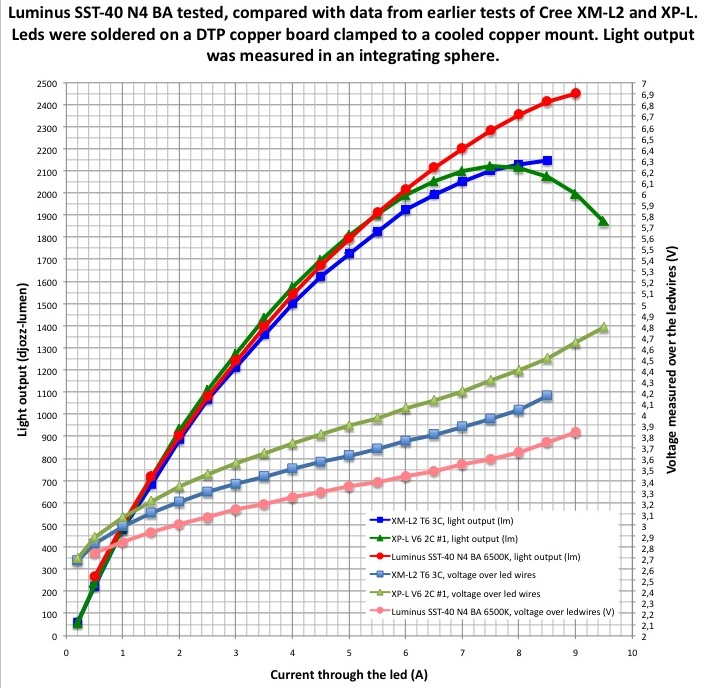
What can be seen:
*the output of the SST-40 does very well compared to the XM-L2 and XP-L. None of these 3 leds tested were the highest output bin so up to 6A it may well be a photo-finish, but above that the SST-40 seems the winner.
*the voltage of the SST-40 is way lower than both the XP-L and XM-L2, this means that at a given current it is more efficient at same output, and that you will more easily drive it hard in a single li-ion flashlight.
*the led died at 9.5A in a classic way: burnt bond wires, this is about the same current that the old tough XM-L2's died at, but the newer ones go at a lower current:
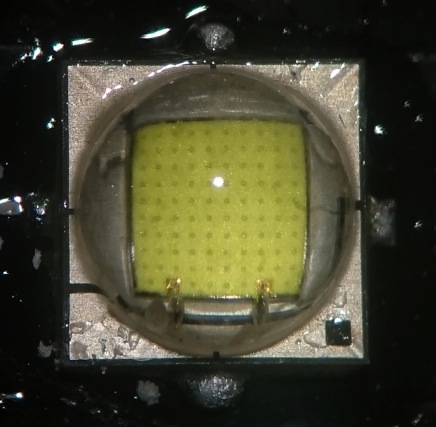
Conclusion:
The SST-40 is cheap, can be used wherever you use an XM-L2, and performs better with both a lower voltage and higher output. This is a fine new led! Only drawback that I see is that although it does come in various colour temperatures and tint bins, it is all 70CRI.
And then of course for a led performing so well the question is: does it dedome and do you gain luminance by doing that? I leave the gasoline methods to the pro's and I tried a hot dedome, which actually went quite well: the dome material behaved a lot like the classic Cree domes (not as stiff as i.e. Nichia domes) and partly it separated nicely from the phosfor on top of the die, leaving some silicone behind on the rest of the die. But the phosfor layer stayed attached well, and I could scrape off most of the remaining silicone off the phosfor with a wooden tooth pick without visually damaging the phosfor. Not perfect at all but so far so good, this is better than any other non-Cree led that I checked for hot dedoming before. Here's how the die looked at very low current:

I had a Lucky-Sun D80 (BLF-edition) spare and put the dedomed led in there, with a BLF-A6 driver, tail-spring bypassed.
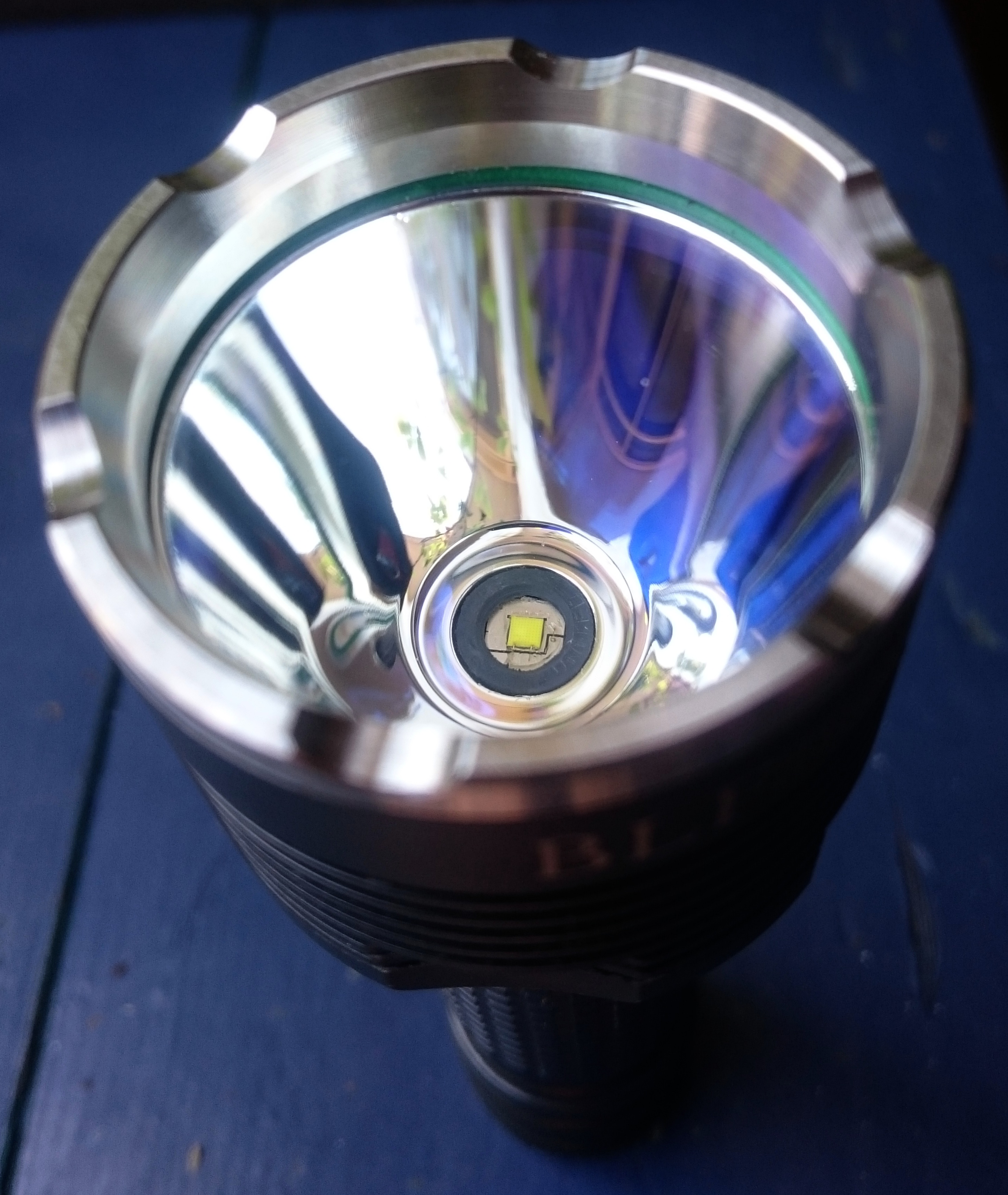
And it performs! On a 30Q battery 7.5A from the clamp meter with tail off, 1626 lumen out the front (tail on). Pretty good for a dedomed single die XM-size led! The dedomed tint is really good, less yellow than most dedomed Cree's. Just the throw could be a bit better, I measured 103 kcd at 30 seconds on a 30Q. I'm curious about throw numbers of properly dedomed SST-40 leds.
 , it is still an ongoing project but the results are more exciting than doing the measurements so it has stalled :innocent:
, it is still an ongoing project but the results are more exciting than doing the measurements so it has stalled :innocent: